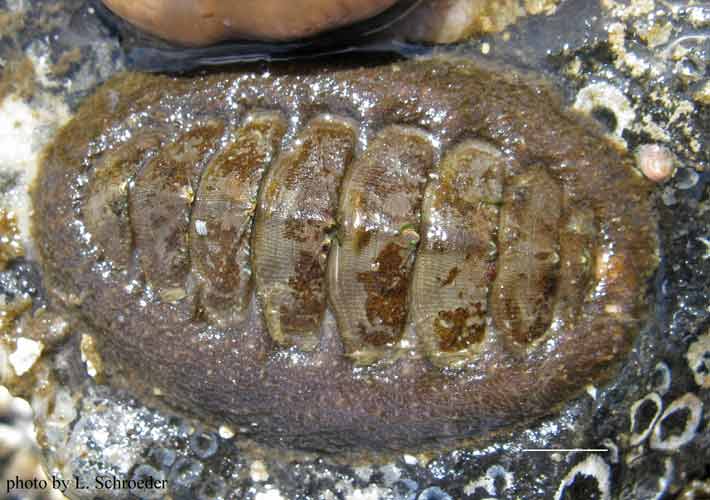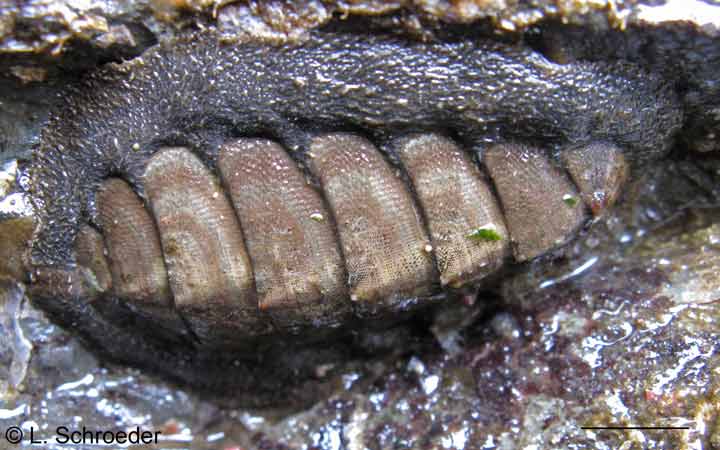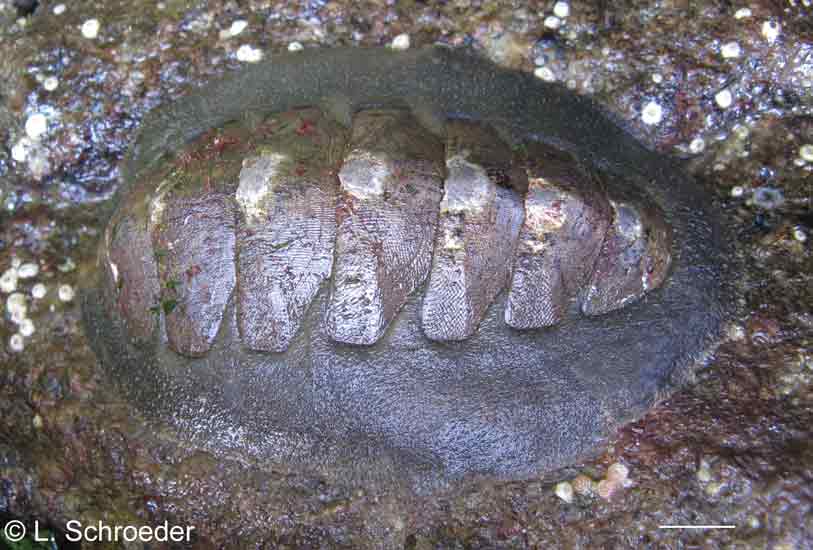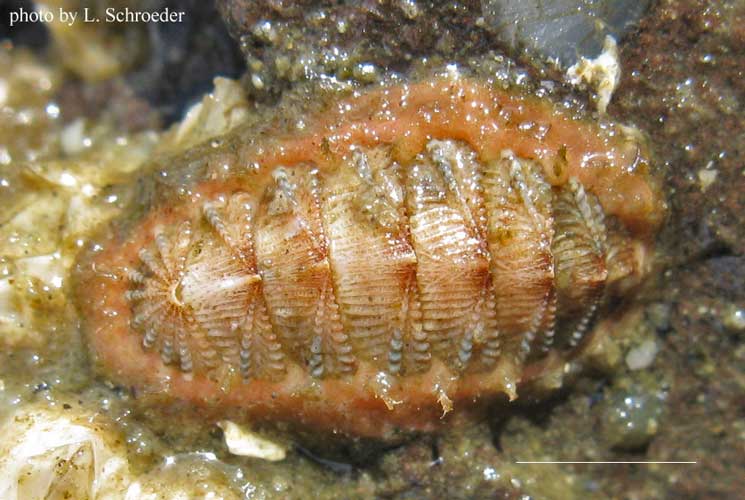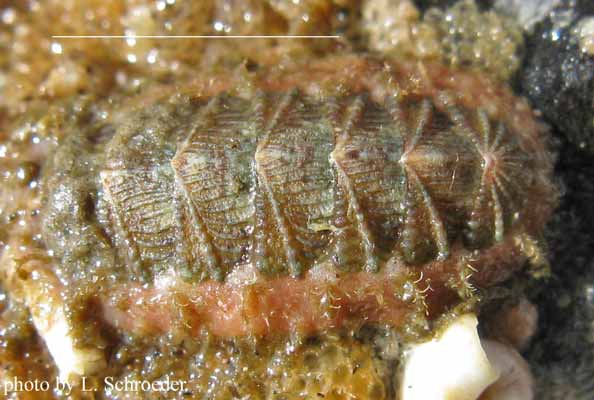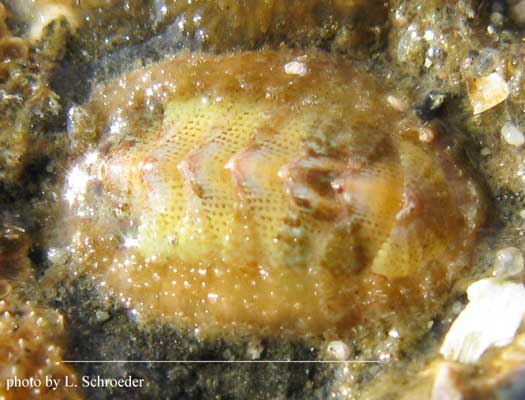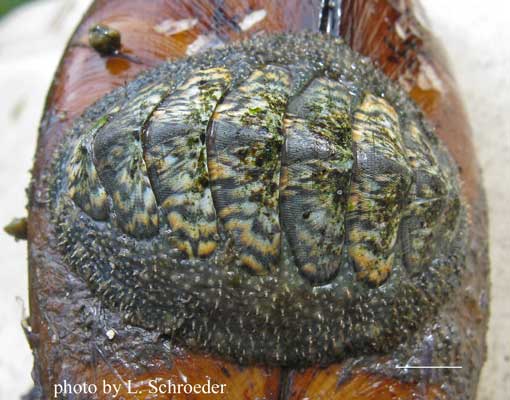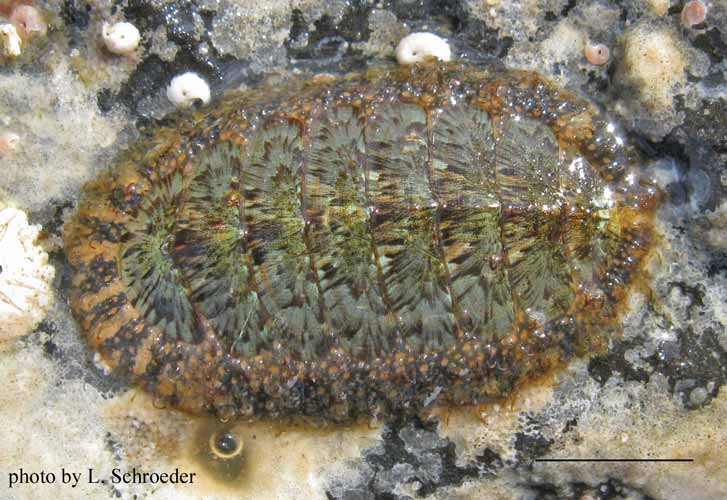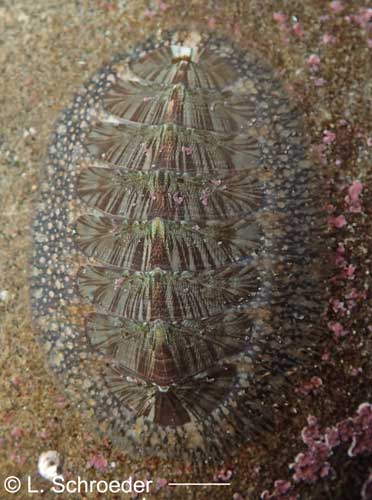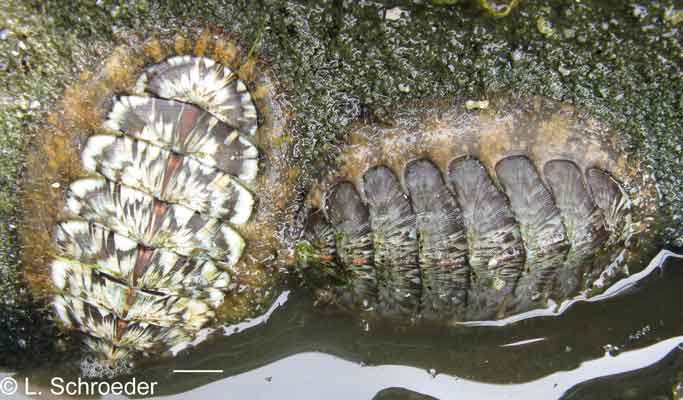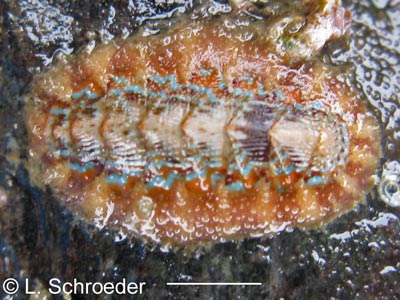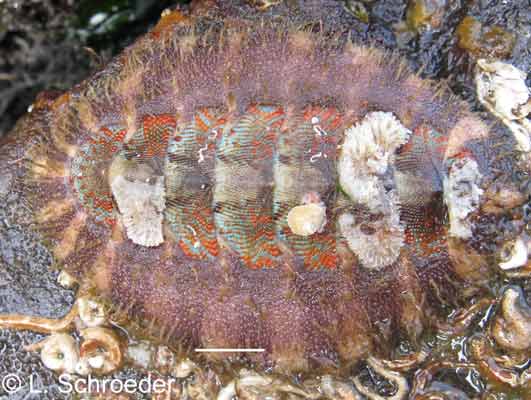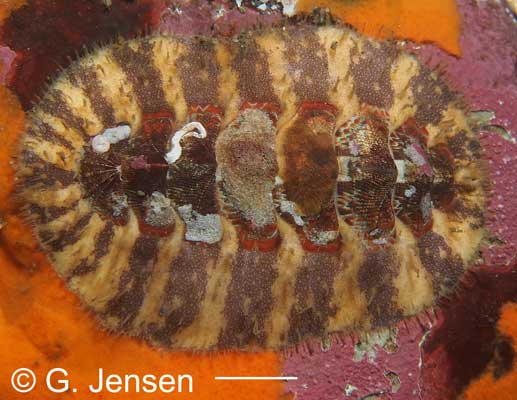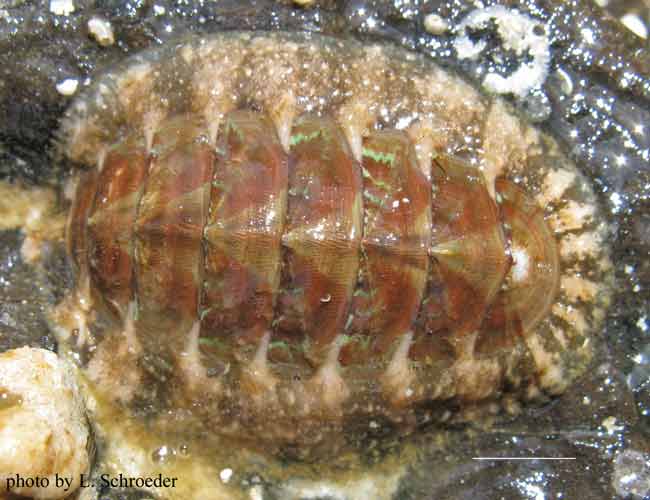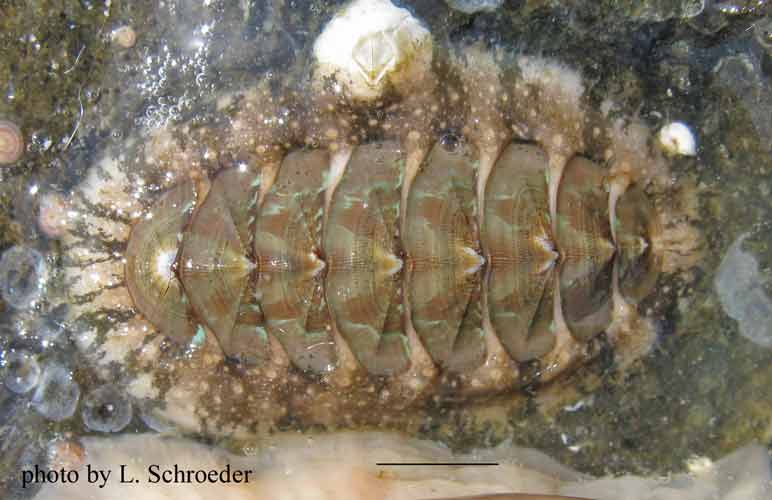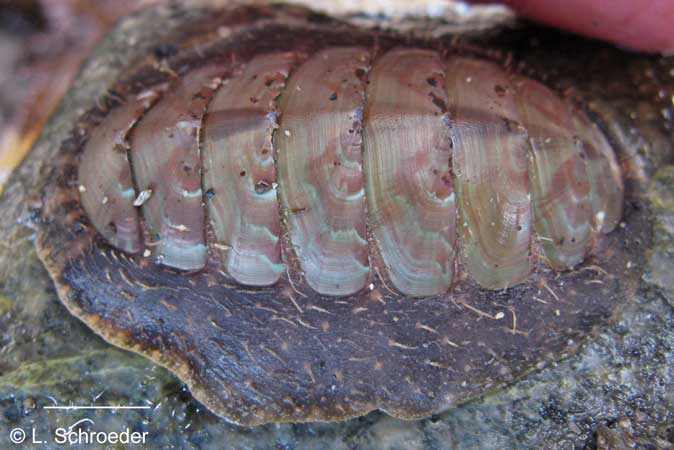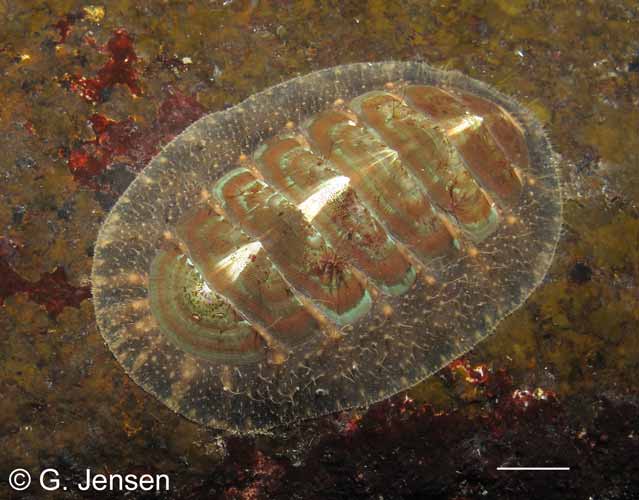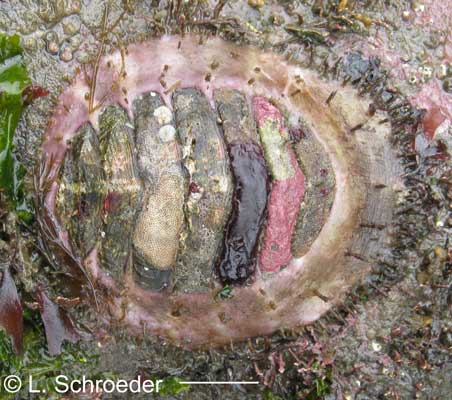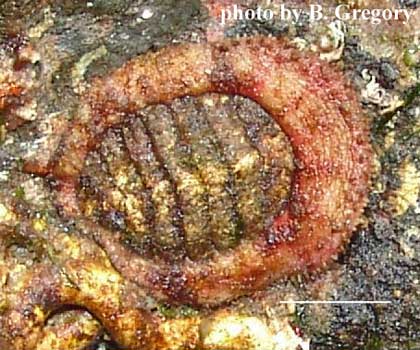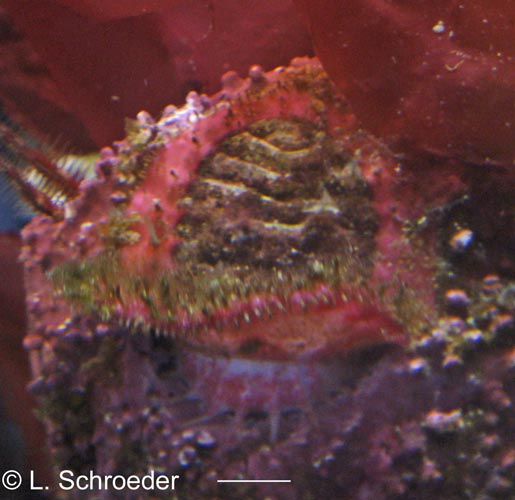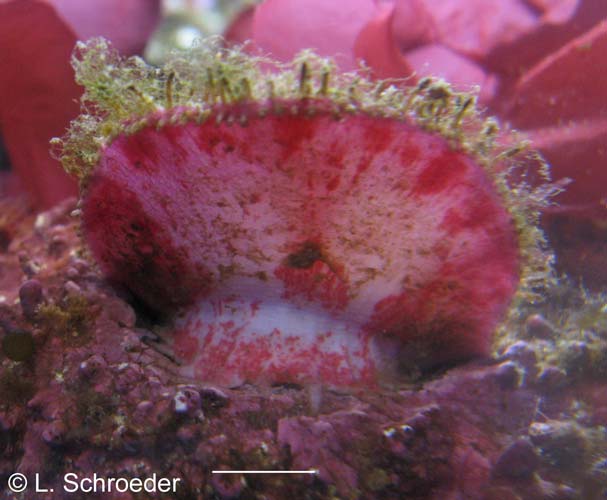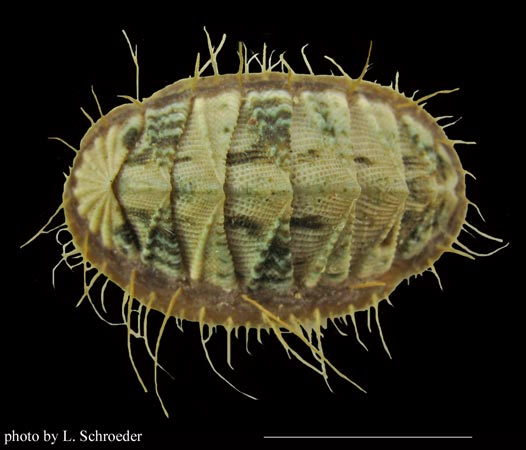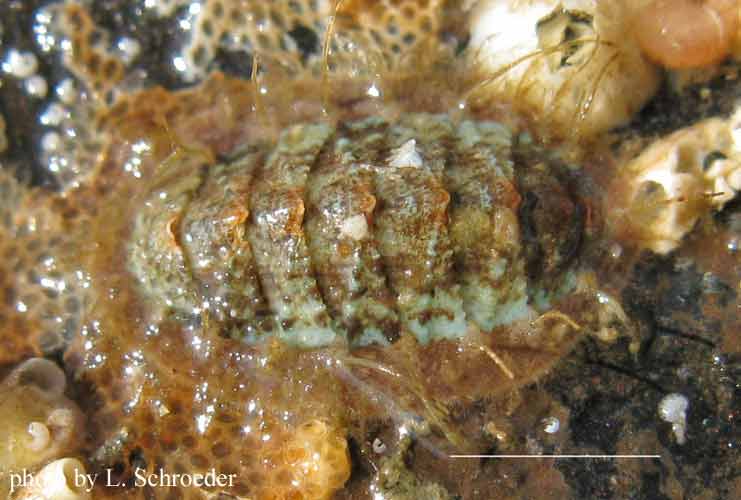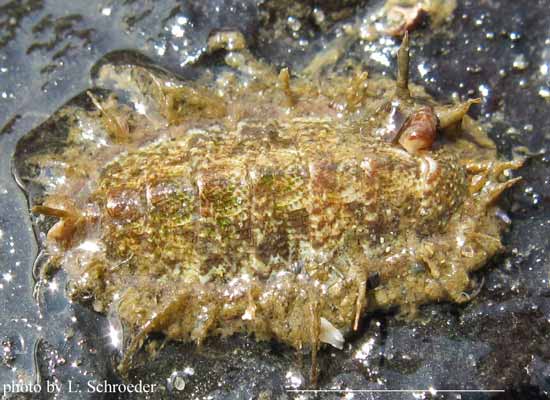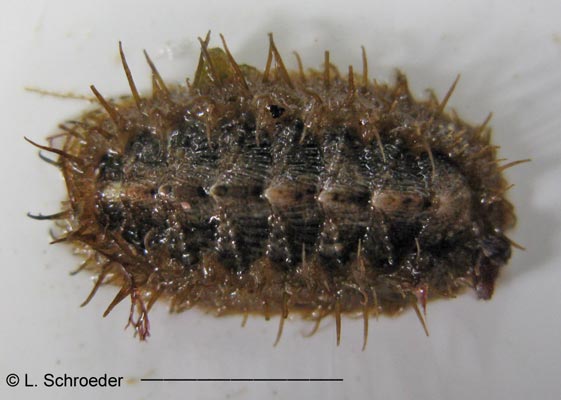Click on photo to enlarge. Scale line in photo equals 1cm unless otherwise specified.
* Species which are commonly encountered on the beach.
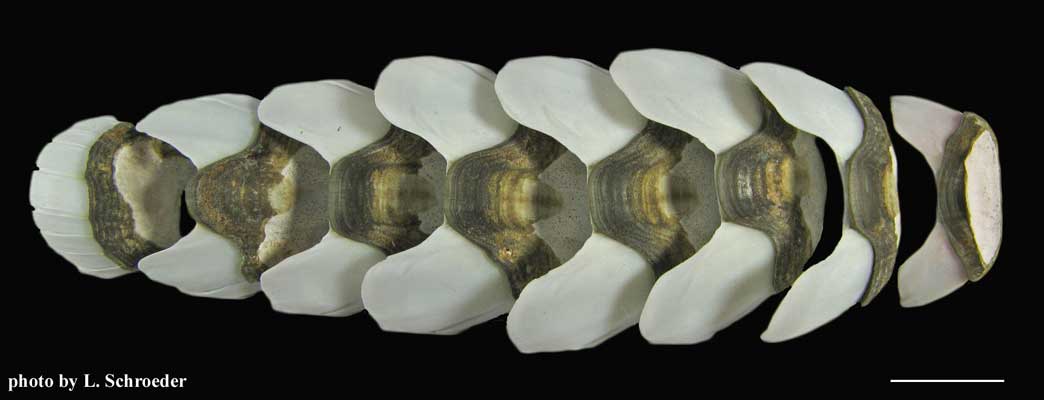
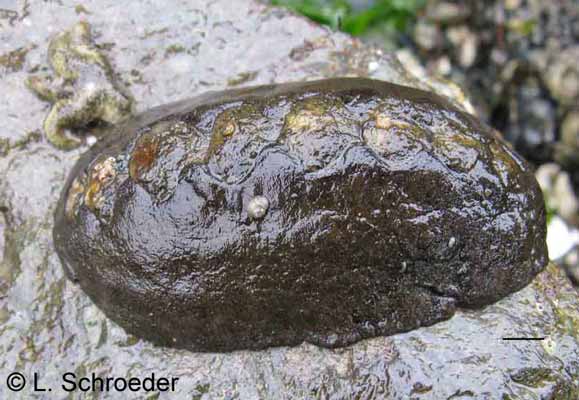
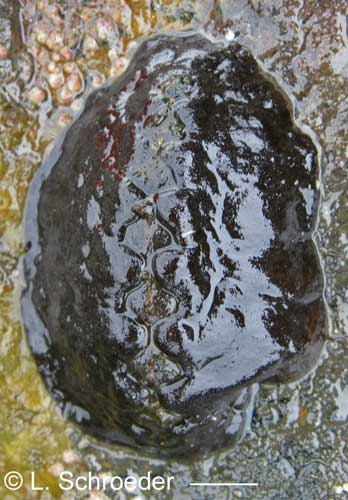
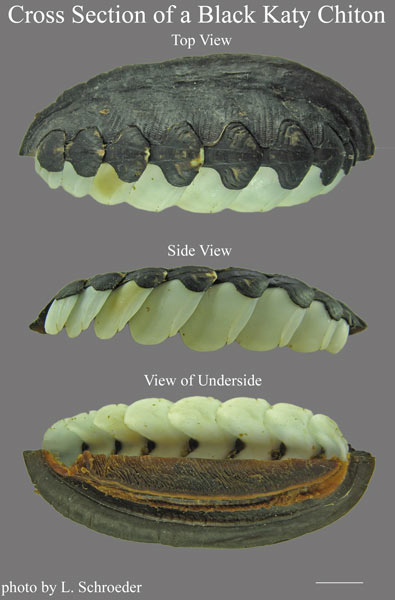 plates
Freshwater Bay, WA, intertidal Anacortes, WA, intertidal
plates
Freshwater Bay, WA, intertidal Anacortes, WA, intertidal
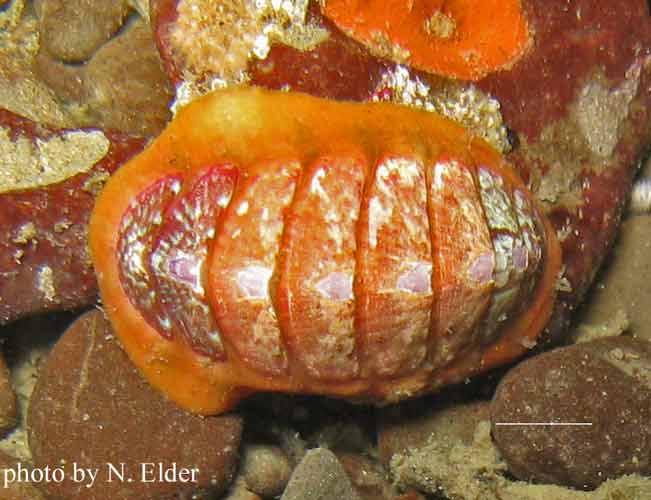
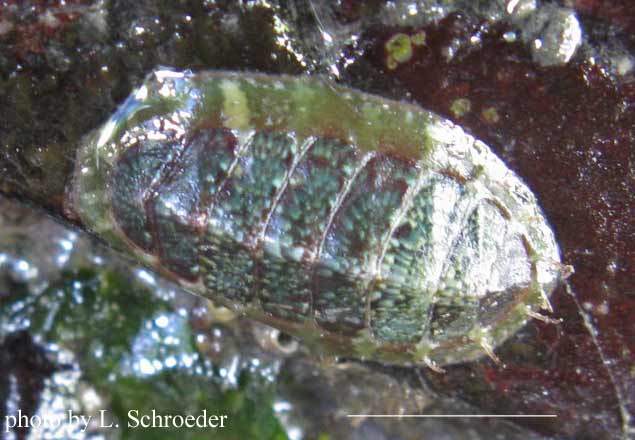
Freshwater Bay, WA, subtidal
Poulsbo, WA, intertidal
Dendrochiton flectens (Carpenter, 1864)Painted Dendrochitonintertidal
to 24m southern California to
southern Alaska size to 3cmThis
species is infrequently found intertidally in the Northwest. It
can be red, orange or green with blue, green or gray speckles.
There is a single row of 5 long bristles on the posterior end.
(synonyms - Leptochitona flectens, Leptochitona heathii)
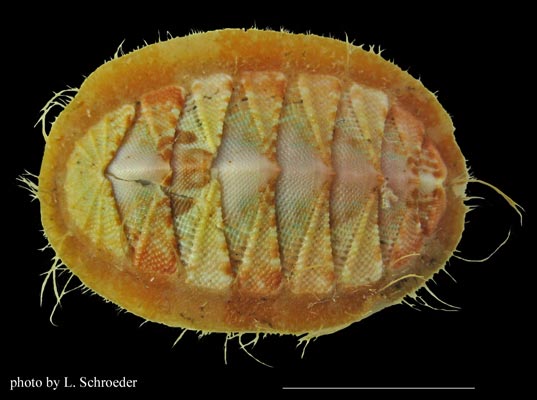
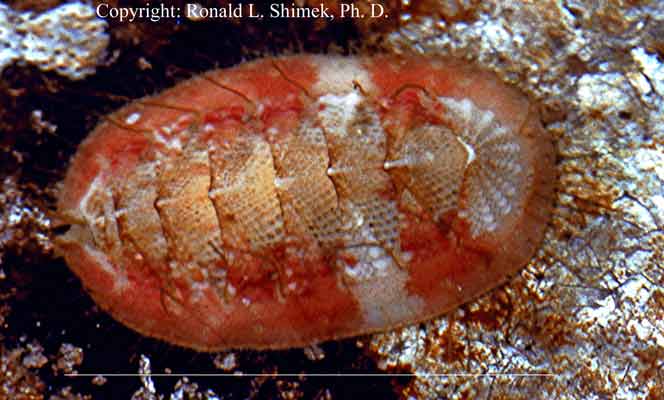
preserved specimen, Ketchikan, AK Lopez Island, WA, subtidal
Mopalia egretta Berry, 1919Egret-Plumed Mopaliasubtidal from 25 to 77m Washington to Alaska size to 2.5cmThis is a somewhat rare species. It can be buff colored to brown to red. The bristles are very fine and branched. The plates have distinctive sculpture.
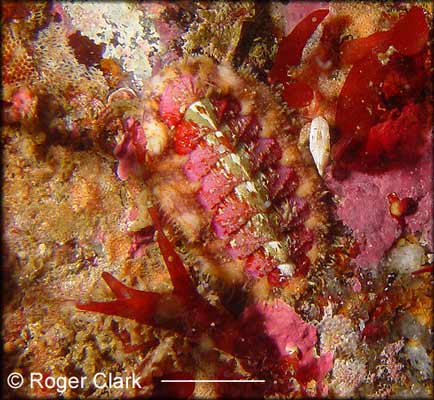 photographed subtidallyMopalia ferreirai Clark, 1991very low intertidal to 18m size to 5cmnorthern California to southern AlaskaThis
species is found in outer coastal habitat and is predominantly
subtidal. In its northern range it can occasionally be found on a
very good low tide. The plates may be variably colored and
patterned. The short bristles (about 2mm) have no groove and are
branched with 5 rows of irregular spicules. The spicules can also be
sparse.
photographed subtidallyMopalia ferreirai Clark, 1991very low intertidal to 18m size to 5cmnorthern California to southern AlaskaThis
species is found in outer coastal habitat and is predominantly
subtidal. In its northern range it can occasionally be found on a
very good low tide. The plates may be variably colored and
patterned. The short bristles (about 2mm) have no groove and are
branched with 5 rows of irregular spicules. The spicules can also be
sparse.
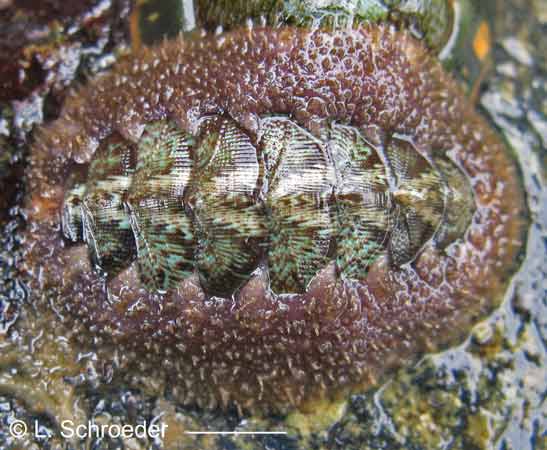
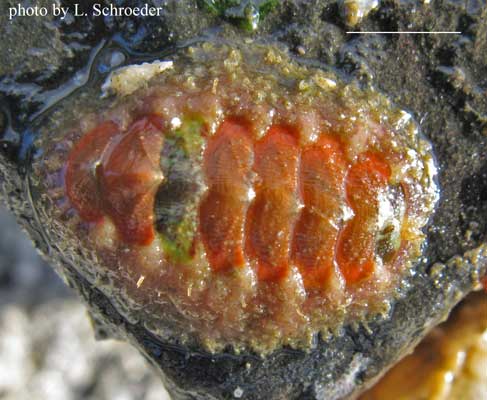
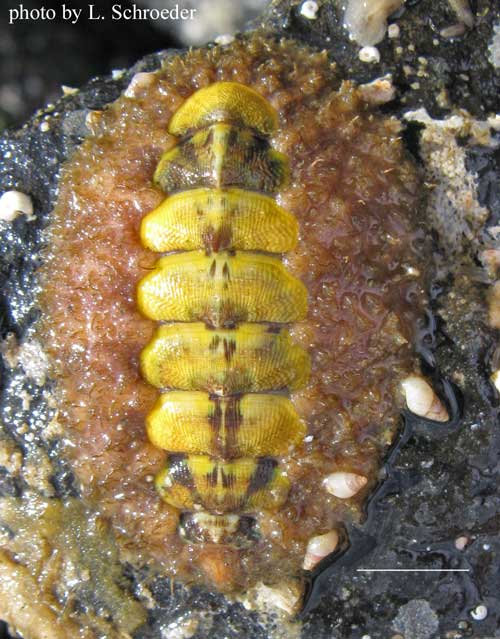
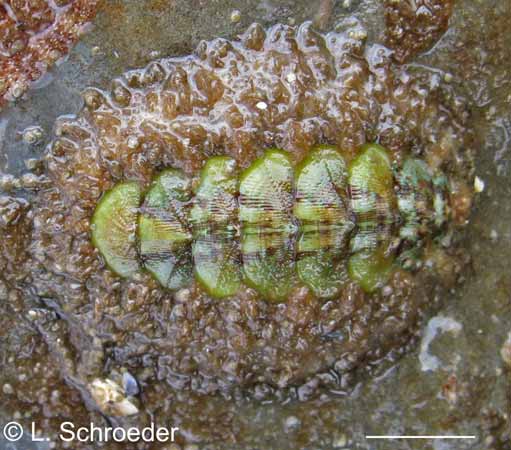
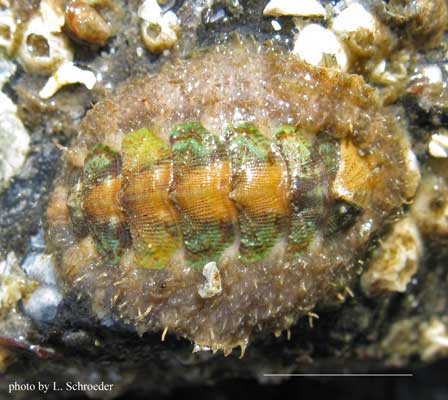
Anacortes, WA, intertidal
Oak Bay, WA, intertidal Oak Bay, WA,
intertidal Gabriola Is., BC, intertidal Oak
Bay, WA, intertidal
rare 7-plate specimen
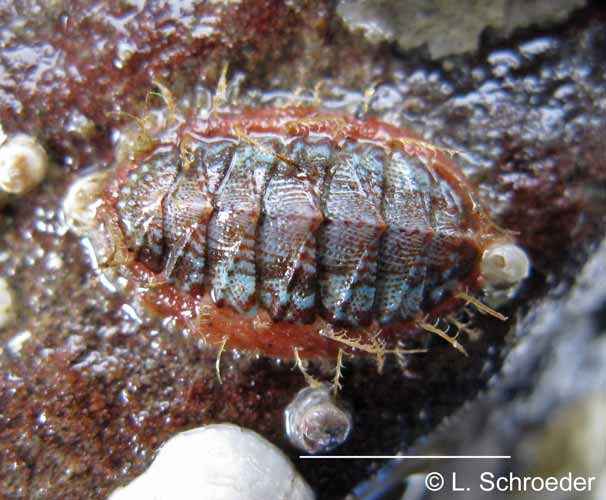
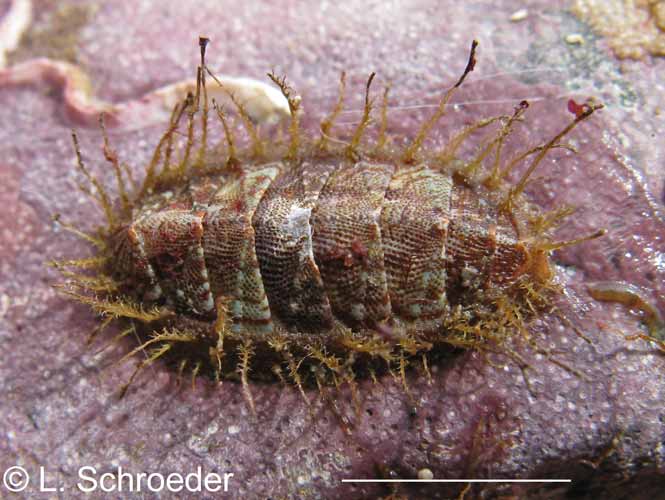
Pender Is., BC, intertidal Gabriola Is., BC, found subtidally
Mopalia sinuata Carpenter, 1864Dwarf Hairy Mopaliaintertidal to 200m size to 2cm
central California to southern AlaskaThis very small species is rarely seen. It can be variable in color but is usually brown. It is covered with long, yellowish hairs which are branched the length of the hairs with robust bristles.
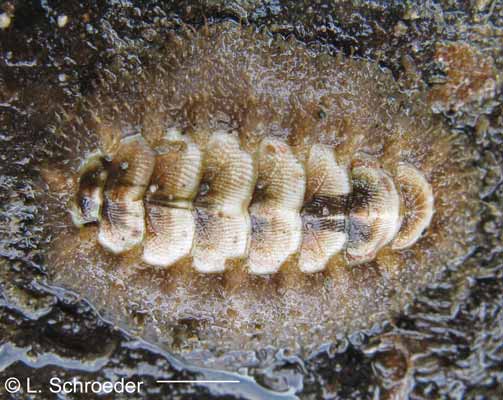
Gabriola Is., BC, intertidal
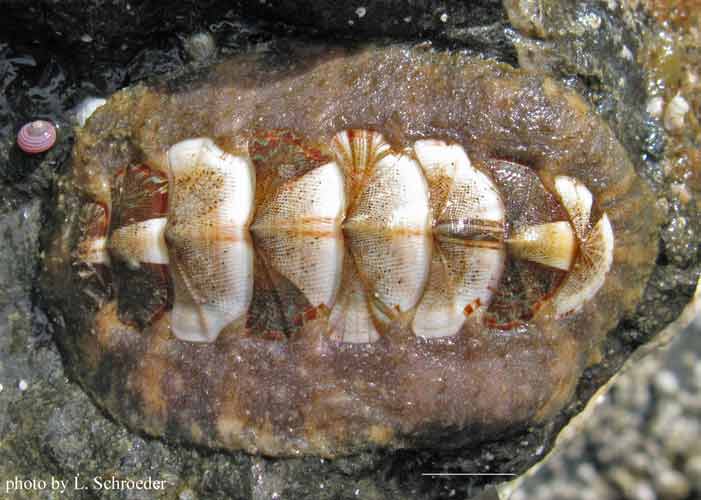
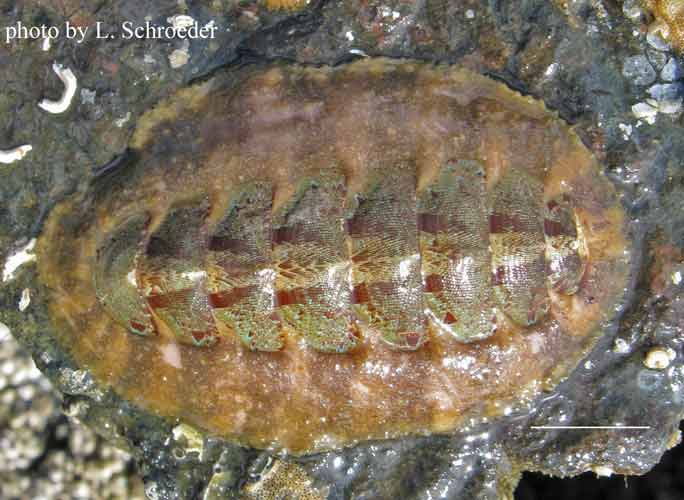
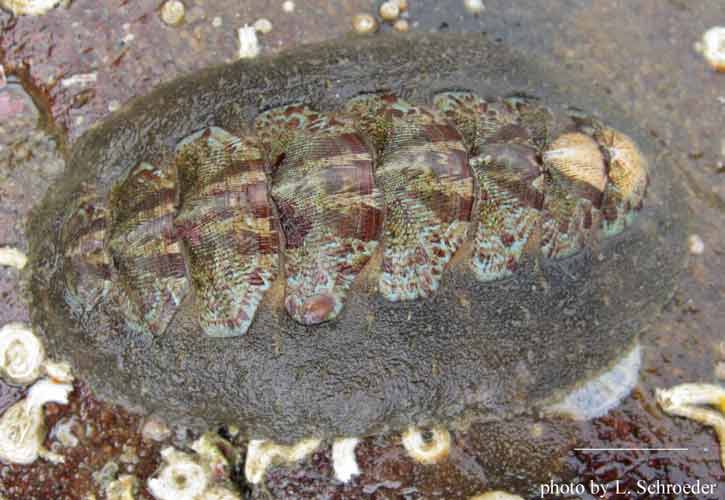
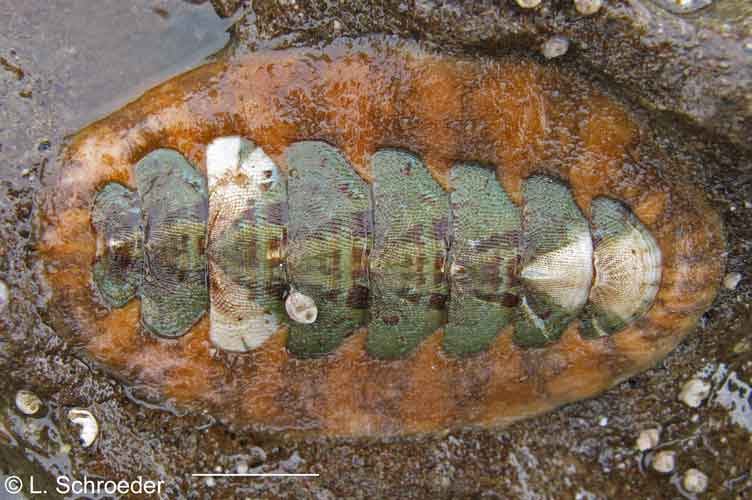
Oak Bay, WA, intertidal
Oak Bay,
WA, intertidal
Anacortes, WA, intertidal
Campbell River, BC, intertidal
Mopalia swanii Carpenter, 1864
Swan's Mopalia *
intertidal
to 19m southern California to
northern Alaska size to 10cm
This
is a fairly common species. It is highly variable in color.
Sometimes individual plates may be solid in color. The
plates are wide and only moderately sculptured. The girdle is also wide and fleshy and seems almost hairless. Close inspection shows sparse, short, fine hairs which are branched with two rows of bristles on opposite sides of each hair.
Mopalia kennerleyi Carpenter, 1864
Northern Hairy Chiton *
intertidal to subtidal northern California to northern Alaska size to 7.6cm
This is a common species and is highly variable
in color. Plates may be solid in color or patterned. Young
specimens show sculpture on the plates but on older ones it is
diminished. It has
numerous hairs on a wide girdle. The hairs are branched with two
rows of bristles. This species was once considered Mopalia ciliata, which is now known to only occur from California and southward.
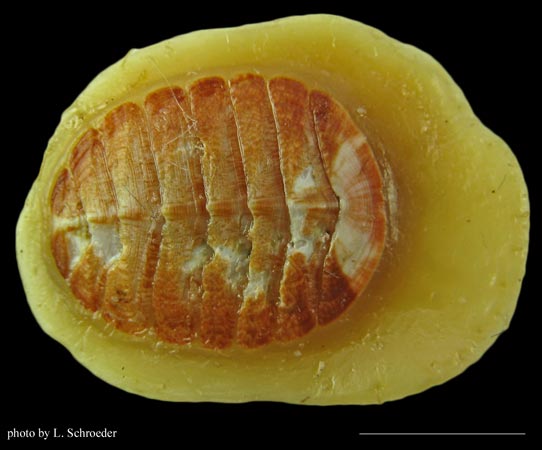
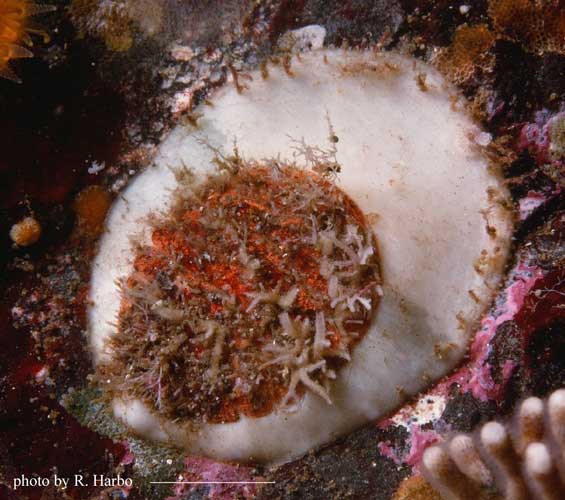
preserved spec., Ketchikan, AK Egmont, BC, subtidal
Placiphorella rufa Berry, 1917Red Veiled-Chitonintertidal to 45m size to 5cmsouthern Oregon to northern AlaskaThis is rarely seen intertidally. It has red plates and a white girdle making it very distinctive. It prefers habitats with moderate to heavy currents.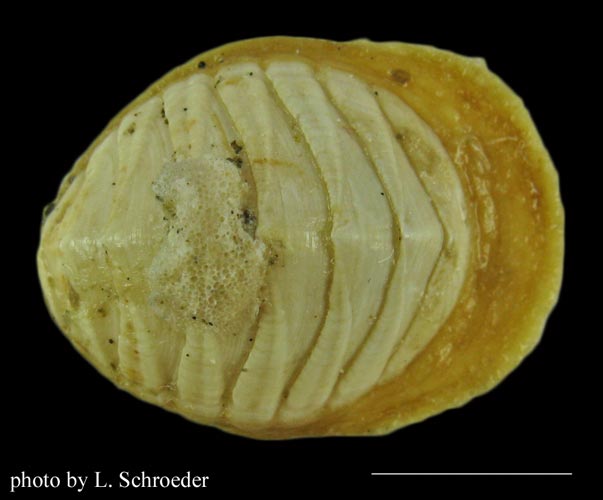 preserved specimen, far west Aleutian Islands, AK
preserved specimen, far west Aleutian Islands, AK
Placiphorella pacifica Berry, 1919Pacific Veiled-Chitondeep subtidal to 2000m size to 4cm
central California to southern Alaska
It is milky white with a pale girdle.
There is debate as to whether this species
is synonymous with Placiphorella atlantica.
This page last revised: 7-2-2024
Chitons (Polyplacophora)
Family Mopaliidae








